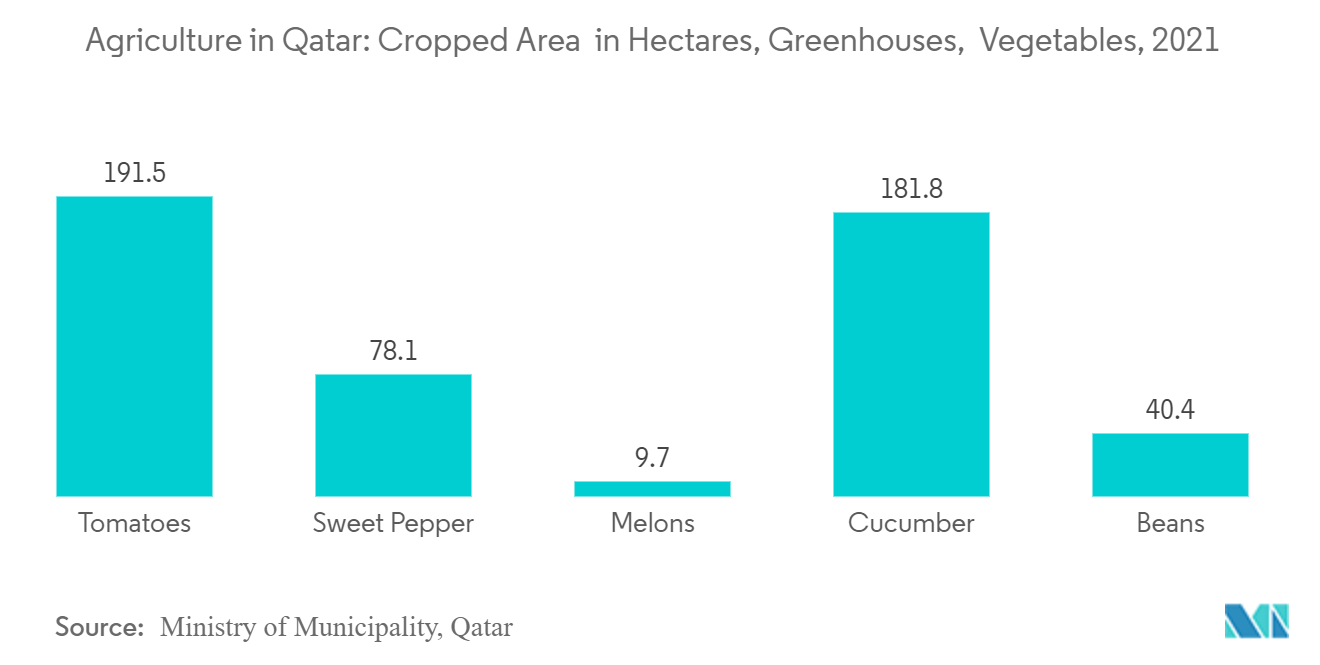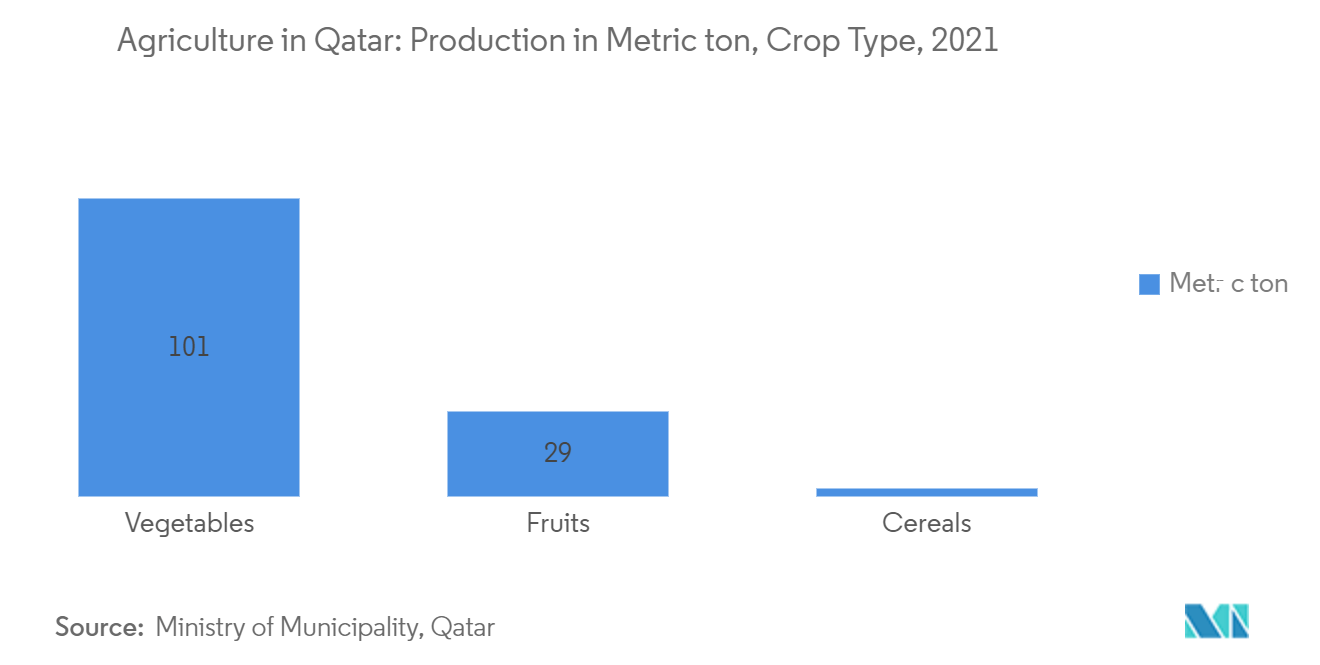Market Trends of Qatar Agriculture Industry
This section covers the major market trends shaping the Qatar Agriculture Market according to our research experts:
Increase in Adoption of High Technology Farming Practices
Qatar's climate is characterized by low rainfall and high temperatures. Despite these challenges, the country has made tremendous efforts over the past few years by adopting sustainable and smart agriculture techniques such as hydroponics, smart irrigation, and aquaponics that have improved the optimum utilization of arable land and the quality of fruits and vegetables. Hydroponics, a predominant system used in vertical farming, is gaining popularity among Qatari farmers, especially to grow local fruits and vegetables using minimal water resources. In 2021, Qatar launched its national agriculture project, which was developed through an aquaponic system that utilizes aquaculture and hydroponics. The project's production capacity is expected to reach 32,000 metric tons per year, and it applies the horizontal farming system.
The Department at the Ministry of Municipality is working to encourage farms by launching various agricultural initiatives and providing technical support and services to farmers. It has distributed 5,777 greenhouses (normal, cooled, and hydroponic) to farm owners from 2016 to 2021 in order to form an integrated system for the greenhouse, which leads to increased production and reduced waste in water use. In 2021, the country produced the highest vegetable production of tomatoes with 32,555.1 metric tons along with coverage of an area of 191.5 hectares in greenhouses in the country, followed by cucumber and sweet pepper, which will make the country implement more advanced technologies and adopt farming practices to make the country self-sufficient in agricultural production.
Carnegie Mellon University in Qatar (CMU-Q), a Qatar Foundation partner university, is launching a new research project that will optimize the operations of greenhouses in Qatar. The project is supported by a National Priorities Research Program grant from the Qatar National Research Fund (QNRF). This research will empower the management of greenhouses with advanced tools so they can precisely know what's going on and what will happen in a crop's development. Agrico has developed a highly sophisticated hydroponics system capable of producing various types of organic and pesticide-free vegetables and fruits year-round and aimed at producing better and higher-quality yields at a faster pace. Qatar, on the other hand, has begun exporting its hydroponic farming technology in the region, particularly to Oman.

Vegetable Sector Dominates the Market
According to the Minister of Municipality and Environment, Qatar is planning to achieve self-sufficiency in vegetable production in the coming years. Qatari produce covers around 70% of the market's needs during some parts of the year. As a result, a plan to achieve complete self-sufficiency is expected to be implemented in cooperation with farm owners. This has led to the development of vegetable production. Qatar is launching a food security program with the aim of ensuring that, by 2023, nearly 70% of the number of vegetables consumed by citizens will grow at the local level, which will be four times the amount produced at present. Under this program, the country is aiming to achieve self-sufficiency in tomatoes, cucumbers, peppers, cauliflower, potatoes, eggplant, onions, and cabbage. Overall vegetable production in the year 2021 was 101,881 metric tons, which is a decline compared to the year 2020 because of COVID-19 restrictions on various agricultural operations and a lack of technical and labor facilities in the country. Further, vegetable production is going to witness growth in the country in the coming years.
Using modern production methods applied to both outdoor and indoor cultivation, local farms are making considerable efforts to improve their vegetable production. This also includes the rapid development of equipment and practices suitable for use in hot, arid climates, such as greenhouses, water-conserving irrigation techniques, and cooling technologies that enable the availability of vegetables all year round, thereby boosting Qatar's domestic production. This is further aiding the growth of the market studied. Various agricultural farms in the country are also expanding their vegetable production.

